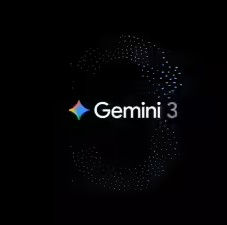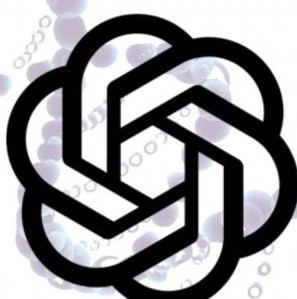1. Setting the Stage: AI Race & Market Context
The race for advanced generative AI models has intensified over the past year, with players across the ecosystem pushing boundaries in reasoning, multimodal integration and agentic capabilities. Google, after earlier iterations of its Gemini models, has now positioned Gemini 3.0 at the forefront of that competition. CEO Sundar Pichai’s announcement underscores not just a technical upgrade but a strategic thrust into “intelligent agents” that blend different modalities and reasoning depth.
The timing is critical: with demands for AI in enterprise, creative, industry and consumer segments growing rapidly, a model that can handle complex, real-world tasks across media types is increasingly the differentiator.
2. What Gemini 3.0 Brings: Multimodal Mastery & Deep Reasoning
At its core, Gemini 3.0 is designed to extend beyond text-only AI: it can understand text, images, audio, video and even code in one unified framework. According to Google’s documentation, it is described explicitly as “the best model in the world for multimodal understanding” and “our most powerful agentic and vibe-coding model yet, delivering richer visuals and deeper interactivity, all built on a foundation of state-of-the-art reasoning. Detailed benchmark results show impressive metrics: for example, Gemini 3 Pro reportedly achieves 81.0% on the MMMU-Pro (multimodal understanding) benchmark vs 68.0% for the prior generation.
Other key features include:
- Deep-Think mode or extended reasoning capability enabling longer chain-of-thought tasks.
- Agentic and tool-use functionality: ability to orchestrate multi-step tasks, interface with tools or code generation.
- Ultra-long context handling: the model is reported to handle very large context windows (up to hundreds of thousands of tokens) enabling richer conversation and multi-document comprehension.
3. Availability & Deployment Strategy
The launch news confirms that Gemini 3.0 is now available in Google’s ecosystem—through its AI-powered services including search, assistant models and enterprise tools. Google has also signalled a phased rollout, integrating into its cloud, developer APIs and productivity suites.
Moreover, Pichai has indicated that the release is part of a broader acceleration of Google’s AI roadmap, with deeper integration into its products and services.
In public remarks, he emphasised that while the model sets a new standard, users and organisations should still exercise caution in how they deploy and rely on AI outputs.
4. Implications Across Sectors
Enterprise & Industry Use Cases
Gemini 3.0’s capabilities in code generation, multimodal reasoning and long-context understanding open new potential for enterprise automation, intelligent assistants in finance, healthcare, manufacturing and auditing. As the user profile of chartered accountants and regulatory bodies (such as Institute of Chartered Accountants of India) increasingly explore how AI can aid in analysis, auditing and insights, models like Gemini 3.0 may become part of future workflows.
Creative & Media Landscape
With image, video and audio understanding, the new model can help automate richer content creation, summarisation, and synthesis across modalities. This raises productivity and also question about ethical use, oversight and governance.
Research & Development
For AI researchers, Gemini 3.0 represents a new benchmark and will likely drive further competition. Models that excel across modalities and tools are becoming the reference point for “frontier AI”.
Regulatory & Trust Considerations
Despite the hype, Pichai’s caution serves as a reminder: models—even advanced ones—are not infallible. For regulatory bodies, compliance, risk assessment and standards in auditing and governance will be important.
5. Competitive Landscape & Strategic Ramifications
The launch of Gemini 3.0 re-energises Google’s position in the generative AI landscape. It comes at a time when rival organisations are launching or planning next-generation large language models. The push to agentic AI—where the model takes actions, not just answers questions—is now central to competitive advantage.
Observers view this move as setting a new standard for multimodal AI, compelling others to accelerate upgrades or risk being outpaced. Indeed, public responses from other tech leaders—such as congratulations from Elon Musk and Sam Altman—underscore the attention this model has drawn.
6. Key Takeaways & What to Watch
- Gemini 3.0 emphasises “multimodal intelligence” as the next frontier in AI.
- Its reasoning, context length and tool-chaining abilities may unlock new categories of applications rather than incremental improvements.
- For professionals, firms and institutions seeking to adopt AI, this model illustrates how the bar for “useful” AI is rising rapidly. The time to evaluate readiness, governance and integration strategies is now.
- From a governance perspective, the model’s increased power makes frameworks for transparency, auditability and safety more important than ever.
- The competitive landscape will accelerate: next-generation models from other players must match or exceed multimodal, reasoning and agentic benchmarks to stay relevant.
- Finally, while the model’s launch is landmark, caution remains: as Pichai pointed out, even the most advanced systems can err, so human review, context awareness and risk mitigation remain critical.
Conclusion
The introduction of Gemini 3.0 marks a defining moment in generative AI – a shift from single-mode capabilities to deeply integrated multimodal intelligence and agentic behaviour. As organisations, regulators and professionals adapt, the implications will ripple across sectors from audit and accounting to creative media and enterprise automation. While the technology promises transformational gains, the need for robust governance, clarity on application boundaries and thoughtful uptake remains as pertinent as ever.
Source:indianexpressGPT







